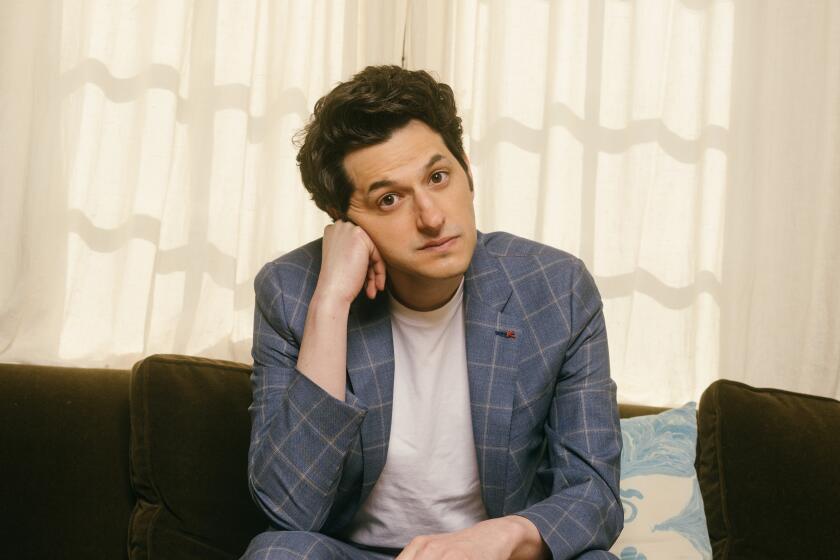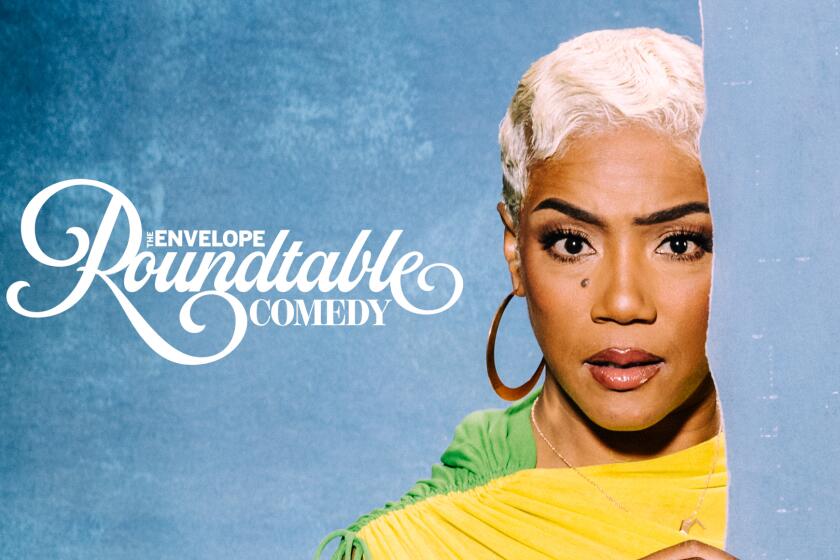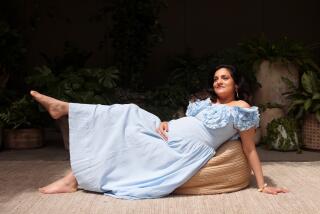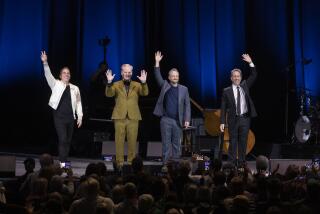‘The Afterparty’: When great ambitions lead to great obstacles — and great fun
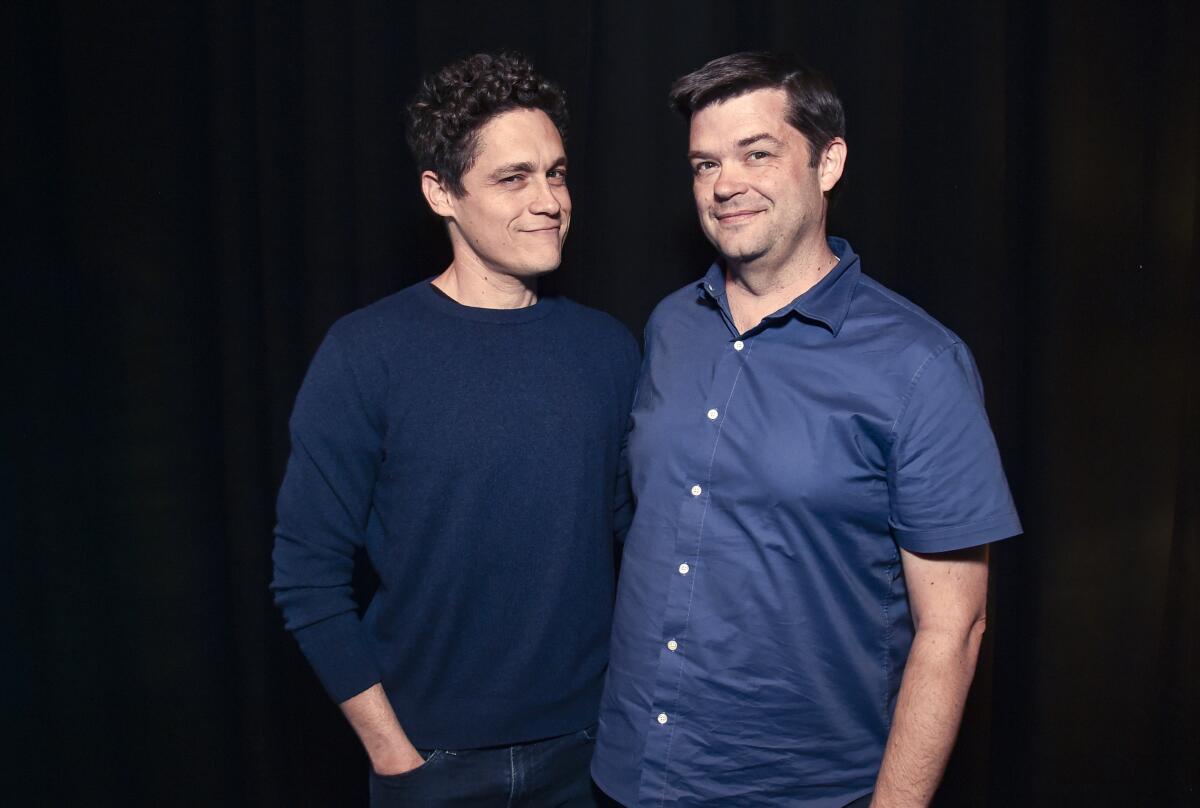
- Share via
“The Afterparty” started as a fun idea — a comedic murder-mystery series in which suspects would tell a detective their own version of the night’s events in a unique film style that matched their personality — a genre mash-up whodunnit at a high school reunion. It would be an opportunity to say something about how we all see the world through our own myopic lenses, and how with a little understanding and empathy we can see each other as people instead of two-dimensional characters. But mostly, making “The Afterparty” was going to be easy, breezy fun.
Then, as happens with every project we take on, we wondered what we had gotten ourselves into. The reality set in of how complicated it would be to tell the same story from eight different perspectives, how intricate it would be to do a rom-com, a thriller, a musical and more, all in one show, all while planting clues and red herrings for a fair-play mystery.
Making each episode a bespoke genre meant we had to reinvent the wheel eight times. The musical episode would need a songwriter and choreographer and prerecorded songs with the actors singing (could they sing?). The action episode would need a fight choreographer and planned-out car chase. The animated episode would need an entirely separate production pipeline with an entirely different crew that would need to happen concurrent with shooting. The show’s mystery was intricate and episodes were interconnected, so changing the script for one scene in one episode meant adjusting corresponding scenes in every other episode’s retelling.
The actor still makes time for improv dates despite his hectic schedule.
Each episode required its own host of creative decisions from camera equipment and lighting styles to wardrobe choices and camera lenses. Each episode needed to have its own distinct aesthetic that resembled the genre the suspect lived in but didn’t feel like a parody. Multiply that by eight. One episode is a musical, but what kind of musical is it? A pop musical? Does it look like a modern music video or a throwback “Bye Bye Birdie” movie? How theatrical would the lighting be? How pushed would the performances need to be without losing the grounded truth of the characters? One episode is a thriller. Did we truly understand the mechanics of how to properly build a jump scare, or how to build escalating suspense in a scene? Could we make moments effectively funny and scary at the same time?
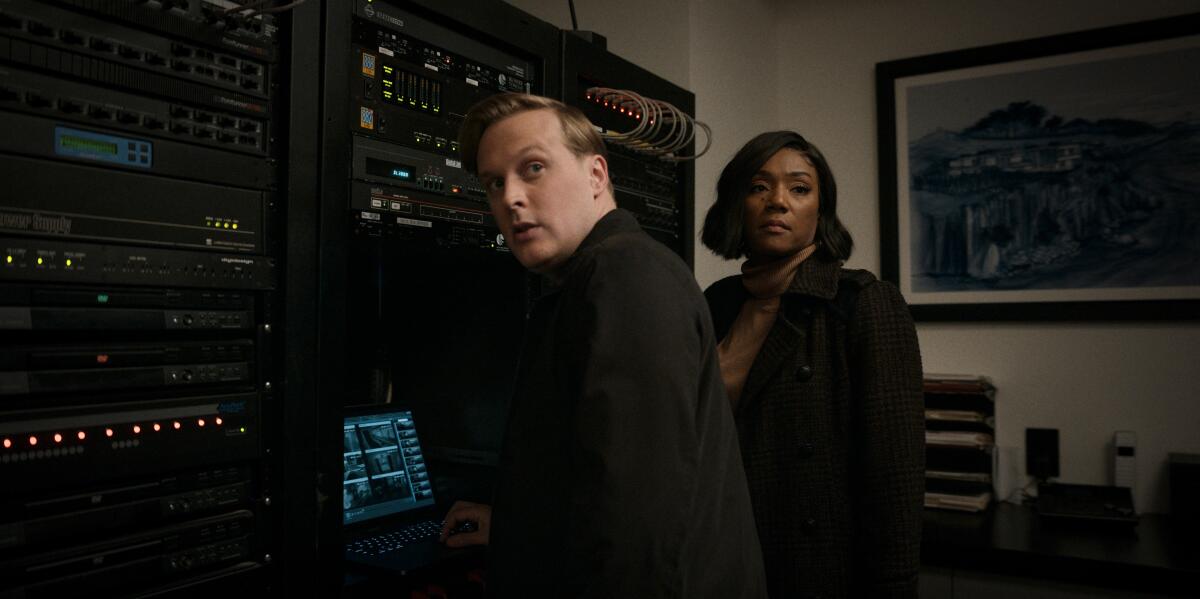
Behind the camera, sometimes our schedule had us shooting a rom-com version of a scene in the first half of the day, then we would relight the set to shoot the thriller version of the same moment.
We had assembled an amazing cast of actors and asked them to craft not just one character they could play throughout the season, but eight different shades of that character. The actors had to consider whether a moment within a flashback was asking them to play the truth of how their character would be in a scene or, since it was an unreliable narrator’s imagining of the story, if they should play how the storyteller sees them. They also had to think about how each genre would shade their performance.
The ambition of “The Afterparty” was so much more than expected. Oh, and did I mention that we decided to hide a bunch of coded clues, ciphers and puzzles in the set dressing of each episode to give a meta-layer to the show for those nerdy enough to look? And all this was going to be filmed during the pre-vaccine pandemic.
But then we got to filming and … it turns out if you work with talented and wonderful people, they make you look good. Many of the actors were writers, producers and creators themselves, so they could seamlessly adjust their performances to whatever shade each moment needed. The crew helped give each episode its own distinct and beautiful look. Each department added its own stamp to things — such as tiny adjustments in costumes, props and set decorations — that augmented the tone and vibe of each style of storytelling. The musical songs were catchy and worked, and Daniel Pemberton’s beautiful score sold each style with inventiveness, held together by a beautiful updated thematic take on the parlor mystery.
And because it was everyone’s first job since the pandemic began, people were excited to come in to work. For many, it was the first time seeing and talking to people in person outside of their families.
It was … well, it was fun.
Just like it was supposed to be.
More to Read
From the Oscars to the Emmys.
Get the Envelope newsletter for exclusive awards season coverage, behind-the-scenes stories from the Envelope podcast and columnist Glenn Whipp’s must-read analysis.
You may occasionally receive promotional content from the Los Angeles Times.
